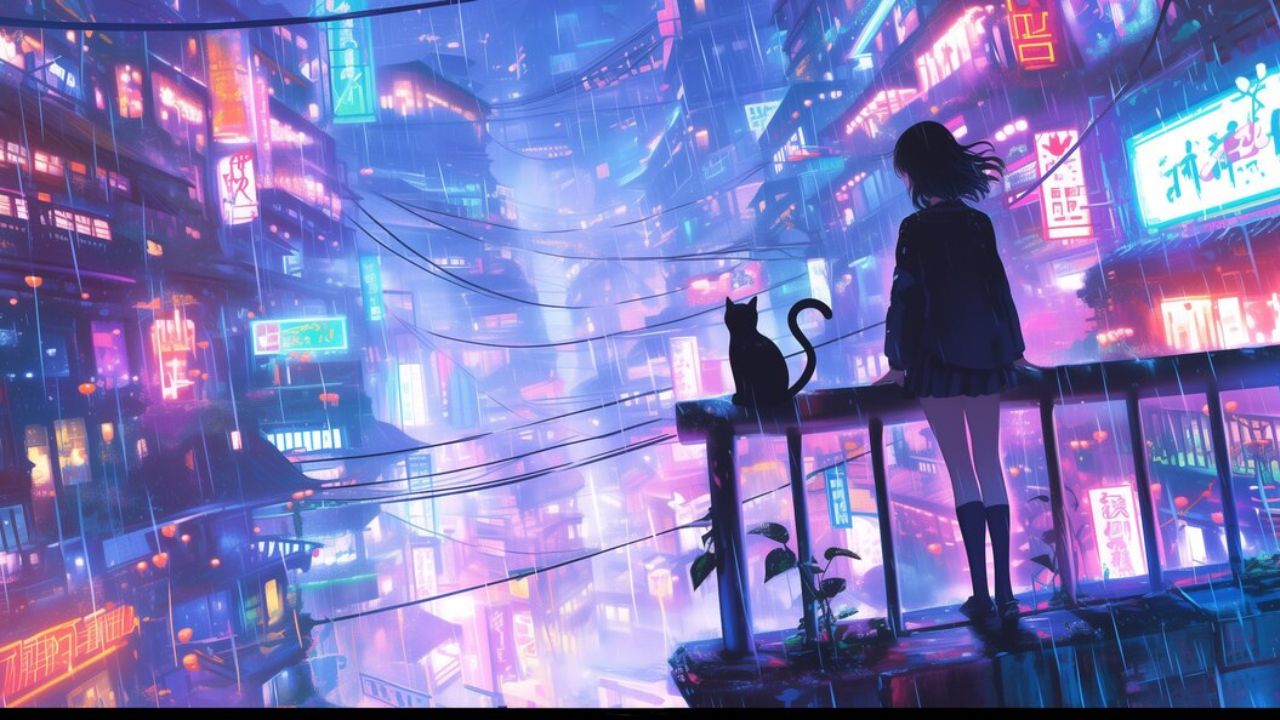Anime holds a special place in global pop culture, captivating audiences for decades. One of the most significant films to emerge from the genre is Perfect Blue, directed by the late and iconic Satoshi Kon. This psychological thriller, which first hit screens in 1997, has influenced both anime and mainstream cinema in profound ways. With its 25th anniversary being celebrated through the highly anticipated Satoshi Kon Fest, now is the perfect time to revisit this monumental work. AXCN
As fans of Perfect Blue gather to honor its legacy, the film’s relevance today remains undeniable. It delves deep into the complexities of identity, fame, and the media’s role in shaping perceptions. As the spotlight shines on Perfect Blue once more, both long-time fans and newcomers are reminded of its timeless brilliance.
The Genius Behind Perfect Blue: Satoshi Kon
Satoshi Kon was more than a director; he was a visionary whose work transcended the boundaries of animation. His unique storytelling approach, combined with his innovative use of editing and visual transitions, set him apart from his contemporaries. Perfect Blue was Kon’s directorial debut, and it established him as one of the most talented and daring filmmakers in anime history.
Kon’s ability to blur the line between reality and fantasy became his trademark. In Perfect Blue, he masterfully explores the inner turmoil of Mima, a pop idol-turned-actress who struggles with her shifting identity. His understanding of human psychology allowed him to create a narrative that is both engaging and unsettling. Kon’s storytelling resonates as it confronts the darker side of fame, mental health, and obsession in modern society.
The Plot of Perfect Blue: A Timeless Thriller
At its core, Perfect Blue tells the story of Mima Kirigoe, a popular J-pop idol who decides to pursue a career in acting. As she attempts to shed her “pop idol” image, Mima faces criticism, online harassment, and a stalker who seems to know every detail of her life. The pressure mounts as Mima struggles to maintain control over her reality, and she begins to question what is real and what is not.
The narrative structure of Perfect Blue mirrors the psychological breakdown of its protagonist. Viewers are constantly left guessing, as the lines between Mima’s acting roles, her personal life, and her imagination blur. This complexity makes Perfect Blue a film that rewards multiple viewings. Every time you watch it, you uncover new layers of meaning and symbolism.
Themes in Perfect Blue: Fame, Identity, and Media
One of the reasons Perfect Blue remains so impactful, even 25 years after its release, is its exploration of themes that are more relevant today than ever. At the heart of the film is the issue of identity. Mima’s struggle to separate her public persona from her private self reflects the pressures that celebrities—and even ordinary people—face in the age of social media.
Fame, particularly in the context of modern media, is another prominent theme in the film. Mima is constantly scrutinized by the public, with every decision she makes criticized and analyzed. This is eerily prescient when considering the rise of social media influencers, where public figures often face relentless pressure to maintain their image while dealing with online harassment.
The film also critiques the media’s role in shaping and distorting reality. Mima’s identity crisis is exacerbated by the way she is portrayed in the press and the obsessive fan culture that surrounds her. Kon masterfully depicts how fame can become a prison, where one’s sense of self becomes tangled with public perception. These themes have only grown more relevant in our modern, media-driven world.
Cinematic Influence of Perfect Blue
Satoshi Kon’s Perfect Blue has left an indelible mark not only on anime but also on global cinema. Directors such as Darren Aronofsky have cited Perfect Blue as a major influence. In fact, Aronofsky famously recreated a scene from Perfect Blue in his 2010 film Black Swan. The psychological unraveling of the protagonist in Black Swan mirrors Mima’s descent into paranoia and confusion, showcasing Kon’s lasting influence on psychological thrillers.
In terms of its cinematography, Perfect Blue broke new ground for animated films. Kon’s signature style of blending the dreamlike with reality became a staple in his later works like Paprika and Millennium Actress. His bold editing choices, where scenes seamlessly transition from one reality to another, forced viewers to question what was real. This technique has since become a common tool in psychological dramas and thrillers.
Satoshi Kon Fest: Honoring a Legend
To commemorate the 25th anniversary of Perfect Blue, the Satoshi Kon Fest has become a major event. This festival not only celebrates the brilliance of Perfect Blue but also pays tribute to Satoshi Kon’s wider body of work. Screenings of his other films, such as Paprika, Tokyo Godfathers, and Millennium Actress, are part of the festival program.
These events offer fans a chance to experience Kon’s genius on the big screen once again, reminding audiences of how much his storytelling continues to resonate. The Satoshi Kon Fest also serves as a platform for discussing the legacy of his work and its impact on both anime and film industries. For long-time fans, it’s an opportunity to revisit the emotional and psychological depth of Kon’s narratives, while newcomers get to experience his films for the first time.
Perfect Blue and Mental Health Awareness
Beyond its role as a psychological thriller, Perfect Blue touches on themes of mental health that are often overlooked in mainstream media. Mima’s struggles with anxiety, identity crises, and paranoia reflect the real-life pressures many face today. The film does not shy away from exploring the darker side of mental health, including how societal pressures can exacerbate these issues.
The portrayal of Mima’s mental breakdown resonates deeply with viewers, especially in a world where mental health awareness is becoming more widespread. Perfect Blue invites discussions about how fame, media, and external expectations can push individuals to the brink. This exploration of mental health remains as poignant and necessary today as it was when the film was first released.
Artistic Style and Music in Perfect Blue
The visual style of Perfect Blue plays a critical role in shaping the film’s intense atmosphere. The animation captures both the glamor and the gritty underbelly of Mima’s world. The contrast between her pop idol persona and her darker, unraveling mental state is reflected in the color palette and cinematography.
The soundtrack of Perfect Blue complements its tense narrative, with music playing an essential role in heightening the emotional stakes. The juxtaposition of upbeat J-pop songs with darker, haunting tracks mirrors Mima’s internal conflict. Music becomes a storytelling tool that enhances the psychological tension of the film.
Legacy of Perfect Blue 25 Years Later
As we celebrate the 25th anniversary of Perfect Blue, it’s clear that the film’s legacy endures. Kon’s masterpiece has influenced countless filmmakers and continues to be a reference point for discussions on identity, fame, and mental health. Perfect Blue not only defined psychological thrillers in anime but also opened the door for more mature and complex storytelling in animation.
The film’s relevance today is a testament to Satoshi Kon’s genius. His ability to address universal themes through a specific lens, while blending the boundaries between reality and illusion, ensures that Perfect Blue remains timeless. It’s a film that invites viewers to reflect on their own experiences with media, identity, and the pressures of modern life.
Conclusion
The 25th anniversary of Perfect Blue offers a moment to reflect on the brilliance of Satoshi Kon and his lasting influence on both anime and global cinema. His ability to create a narrative that explores deep psychological themes, while challenging the boundaries of animation, remains unparalleled. The Satoshi Kon Fest is a fitting tribute to his legacy, allowing fans to celebrate the genius of a filmmaker who continues to inspire.
Perfect Blue remains as powerful today as it was upon its release. Its exploration of identity, fame, and mental health has become even more relevant in the digital age. As we honor 25 years of this iconic film, it’s clear that Satoshi Kon’s influence will endure for generations to come.
FAQs
What is Perfect Blue about?
Perfect Blue is a psychological thriller about Mima, a pop idol who faces an identity crisis after transitioning to acting. The film explores themes of fame, mental health, and media influence.
Why is Perfect Blue so influential?
Perfect Blue has influenced both anime and mainstream cinema with its exploration of psychological themes and its unique narrative structure. Its blending of reality and fantasy set a new standard for psychological thrillers.
How did Perfect Blue impact global cinema?
Perfect Blue influenced directors like Darren Aronofsky, who used similar themes in his films. Its cinematography and narrative techniques have become common in psychological dramas and thrillers.
What makes Perfect Blue relevant today?
The film’s exploration of identity, fame, and media pressure has grown even more relevant in the age of social media. Mima’s struggles resonate with modern audiences dealing with online personas and public scrutiny.
What is Satoshi Kon Fest?
Satoshi Kon Fest is a celebration of the 25th anniversary of Perfect Blue. The event includes screenings of Kon’s films and discussions about his legacy in the anime and film industries.
How does Perfect Blue address mental health?
The film explores the psychological effects of fame and identity crises. It presents a raw depiction of Mima’s mental health struggles, which invites reflection on how society deals with these issues.











